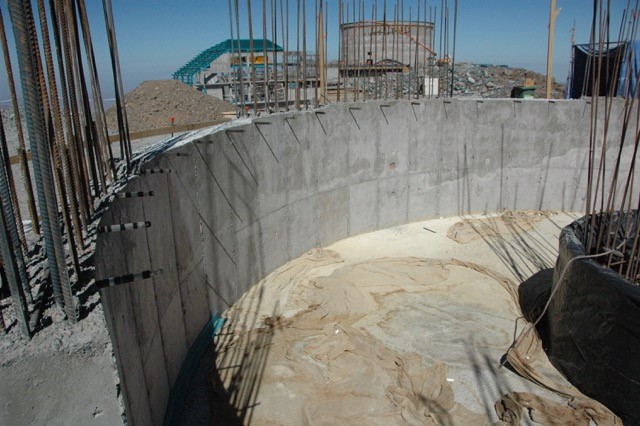
February 3, 2017 – Construction is progressing quickly on Cerro Pachón, not only on the main LSST Facility Building but also on the concrete foundation for the Auxiliary Telescope. This 1.2-meter telescope will measure atmospheric conditions at the site and provide information necessary to calibrate the LSST data throughout the survey. [Read More …]
The 1.2-meter Auxiliary Telescope, formerly known as the Calypso telescope while it was on Kitt Peak, was generously donated to LSST in 2008 by its proprietor, astrophysicist and entrepreneur Dr. Edgar Smith. After a significant refurbishment by Tucson-based Astronomical Consultants and Equipment, Inc., the telescope will be ready to start its new life with LSST.
Once installed on Cerro Pachón, the Auxiliary Telescope will be to measure the transmission of the atmosphere over the LSST bandpass (wavelengths), assisting with post-processing of astronomical data produced by LSST. Adjacent to the main telescope on a knoll casually known as “Calibration Hill,” the Auxiliary Telescope will withstand the same environmental conditions as its much larger companion, surviving up to 120 mile-per-hour winds. When the weather is fit for astronomical observations, the Auxiliary Telescope will function autonomously to provide precise calibration data. The Auxiliary Telescope will be shipped to Chile and begin assembly on site in April, 2018. A couple of recent images show the rapid pace of progress for this effort.
 In this first image from November 2016, taken from inside the LSST facility building, calibration hill is seen being prepared for pouring concrete.
In this first image from November 2016, taken from inside the LSST facility building, calibration hill is seen being prepared for pouring concrete.
This image, taken the week of January 9th, 2017, shows the foundation of the calibration telescope building, the lower enclosure retaining wall, and the Auxiliary Telescope pier. The main LSST support building and lower enclosure are seen in the background.
Financial support for Rubin Observatory comes from the National Science Foundation (NSF) through Cooperative Support Agreement No. 1202910, the Department of Energy (DOE) Office of Science under Contract No. DE-AC02-76SF00515, and private funding raised by the LSST Corporation. The NSF-funded Rubin Observatory Project Office for construction was established as an operating center under management of the Association of Universities for Research in Astronomy (AURA). The DOE-funded effort to build the the Rubin Observatory LSST Camera (LSSTCam) is managed by the SLAC National Accelerator Laboratory (SLAC).
The National Science Foundation (NSF) is an
independent federal agency created by Congress
in 1950 to promote the progress of science. NSF supports basic research and people to create knowledge that transforms the future.
NSF and DOE will continue to support Rubin Observatory in its Operations phase. They will also provide support for scientific research with LSST data.

Contact | Employment | LSST Corporation